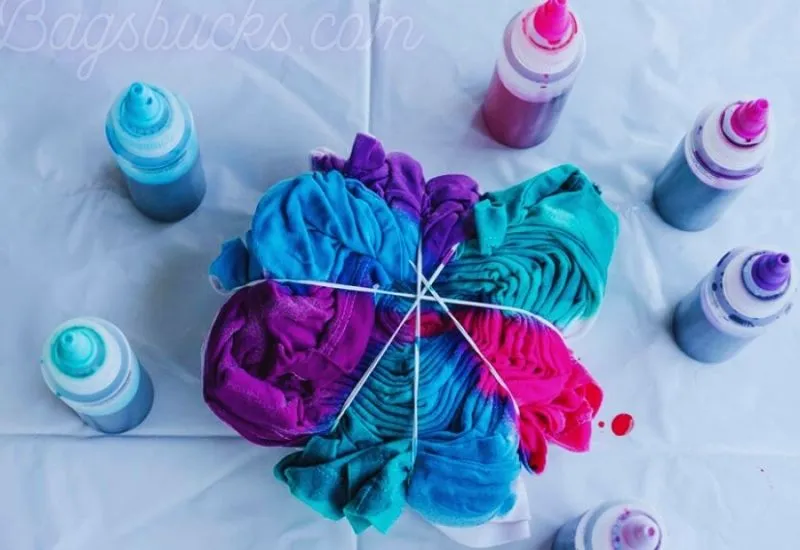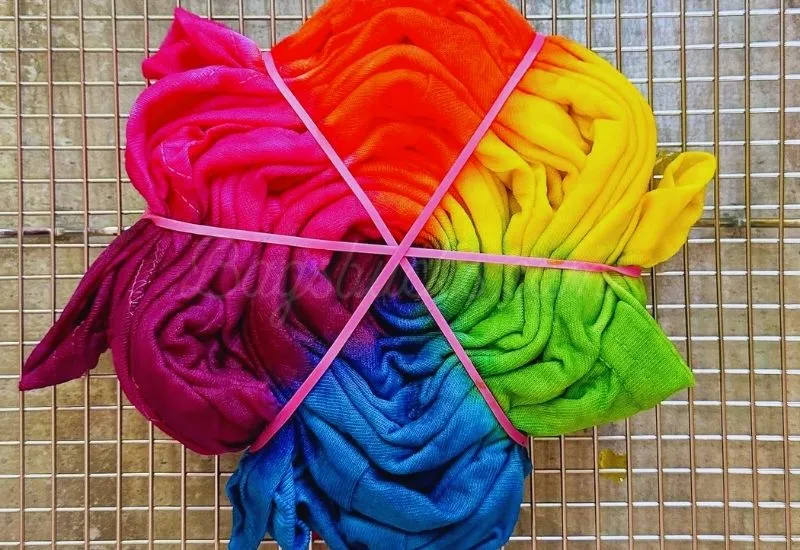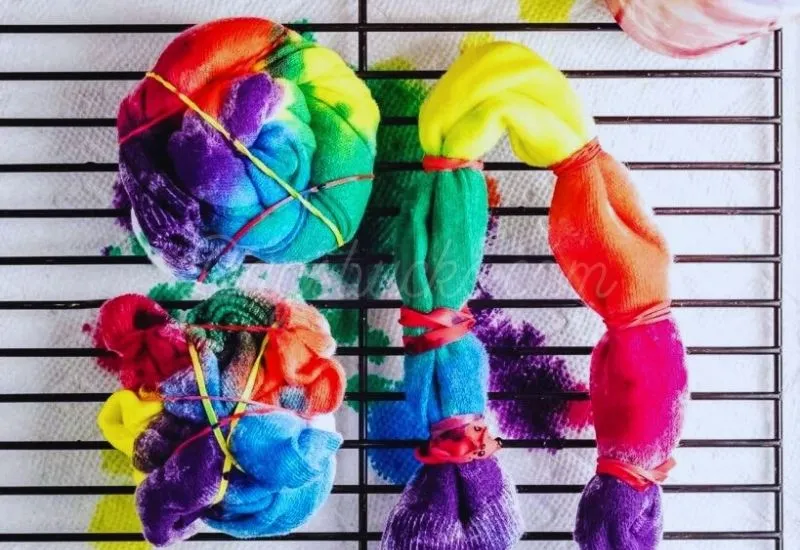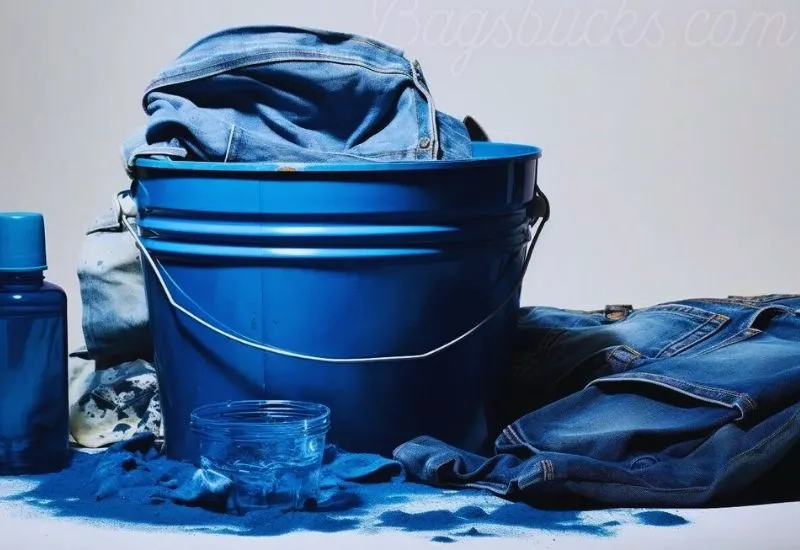
Edited by Abdullah Faraz on July 20, 2024
You may be trying to give new life to an old polyester garment, but its unique dye-resistant properties can prove challenging. Traditional dyeing methods that work wonders on natural fibers like cotton often fail with polyester.
You’re not alone in this dilemma. Imagine spending hours on a dye project only to end up with patchy, uneven hues. The frustration of seeing your favorite garment ruined can be overwhelming.
Don’t lose hope; there’s a solution! With the right techniques and materials, you can achieve the best results at home. This blog post will guide you through the specific dyes that work best for polyester. Say goodbye to dye disasters!
Overview of Polyester Dyeing
Dyeing is the process of transferring dye into the prepared textile material. Basically, it is an interaction between the dye and the fabric. For the vibrancy and visual appeal of fabrics, dyeing is crucial.
Traditional types of dyeing, i.e., natural dyes, direct dyes, vat dyes, reactive dyes, and acid dyes, don’t work on polyester due to its synthetic nature and resistance to water-based dyes.
Polyester dyeing is quite different from general dyeing processes. It requires specific types of dyes and processes to retain the colors.
Types of Suitable Dyes for Polyester
Here are the best dyeing options for polyester:

Disperse Dyes
Disperse dyes are designed for hydrophobic fibers like polyester, acetate, and nylon. They are synthetic with low water solubility. They are characterized by their low water solubility and their ability to be dispersed in water, hence the name “disperse dyes”1.
Heat Transfer Dyeing
Heat transfer dyeing is used to apply designs and colors to synthetic fabrics, particularly polyester. This method involves transferring a dye from a solid state to a gaseous state and then passing the liquid phase on the fabric.
This method is also known as sublimation or heat transfer printing2.
Dyeing of Natural Fibers vs Synthetic Fibers
| Feature | Natural Fiber | Synthetic Fiber |
| Types of Dyes | Direct, Reactive, Vat, Azoic, Sulfur, Mordant | Disperse, Basic, Acid, Direct, Reactive |
| Fiber Examples | Cotton, Wool, Silk, Linen | Polyester, Nylon, Acrylic, Spandex |
| Dyeing Temperature | Usually lower temperatures | Often requires high temperatures (e.g., disperse dyes) |
| Color Vibrancy | Typically good, varies with dye type and fiber | Generally very good, especially with disperse dyes |
| Chemical Usage | Often requires more chemicals for mordanting | Often requires fewer chemicals, but varies by dye type |
| Eco-Friendliness | Varies; natural dyes can be more eco-friendly but less common | Synthetic dyes can be less eco-friendly but more efficient |
| Ease of Dyeing | Easier, as natural fibers tend to take up dyes more readily | More challenging, as synthetic fibers often resist dyes |
| Durability | Good, but can fade over time | Excellent, especially with proper dyeing techniques |
| Color Range | Wide range, vibrant colors | Extremely wide range, can achieve very vibrant colors |
| Cost | Generally lower but depends on dye type and process | Generally higher, especially with specialized dyes |
Methods for Dyeing Polyester

Using Disperse Dyes
Disperse dyes are ideal for polyester due to their chemical compatibility, ability to be dispersed and penetrate the fiber, thermal stability, and small molecular size. Their excellent color fastness, and versatility in producing a wide range of colors.
Processing Steps of Disperse Dyes
- Preparing the fabric
- Dissolving the dye
- Heating and dyeing process
- Rinsing and finishing
Tips to Achieve Best Results in Disperse Dyes
- Proper Fabric Selection: Disperse dyes work best on synthetic fibers such as polyester, nylon, and acetate. Ensure your fabric is suitable for dispersed dyeing.
- Preparation of Fabric: Thoroughly clean and prepare the fabric by washing it to remove any finishes, oils, or contaminants that could hinder dye absorption.
- Dye Dissolution: Dissolve the dyes completely in hot water before adding them to the dye bath. This ensures even distribution and vibrant color.
- Temperature Control: Maintain a consistent dye bath temperature according to the dye manufacturer’s instructions. Typically, disperse dyes require higher temperatures (around 100-130°C) for effective dyeing.
- Dyeing Time: Allow sufficient time for the fabric to absorb the dye. This can range from 30 minutes to several hours, depending on the depth of color desired and the specific dye used.
- Agitation: Agitate the dye bath gently to ensure even dyeing. Stirring or moving the fabric periodically helps achieve uniform coloration.
- Rinsing and Washing: After dyeing, rinse the fabric thoroughly in warm water to remove excess dye. Follow this with a wash using a mild detergent to remove any residual dye and improve colorfastness.
- Fixation: Some dispersed dyes require fixation with a chemical agent or steam to enhance colorfastness. Follow the dye manufacturer’s recommendations for fixation.
- Safety Precautions: Wear appropriate protective gear, such as gloves and goggles, when handling disperse dyes and working with hot dye baths3.
Heat Transfer Dyeing
Heat transfer dyeing is particularly well-suited for polyester due to several key factors. This method yields vibrant, long-lasting colors by bonding the dye directly with polyester fibers. It allows for the reproduction of detailed designs with excellent precision, ideal for complex patterns, logos, and graphics.
The strong bond formed between the dye and fibers enhances durability, making the fabric resistant to washing and wear. Additionally, polyester’s moisture-wicking properties are preserved, making it perfect for activewear and sportswear.
Steps of Heat Transfer Dyeing
- Creating or purchasing heat transfer designs
- Preparing the polyester fabric
- Applying the heat transfer
- Post-transfer care
Heat transfer dyeing is versatile and suitable for various polyester types, including woven, knit, and blends. The process is quick and efficient, reducing water and chemical usage.
Alternative Methods for Dyeing Polyester
Here are some alternative methods of polyester dyeing:
Fabric Paints
Types: Acrylic-based, water-based, and fabric-specific paints.
Application Techniques: Brushing, stenciling, and sponging.
Fabric Markers
Types: Permanent, water-based, alcohol-based.
Application Techniques: Freehand drawing, stenciling.
Advantages and Disadvantages of Alternative Dyeing Methods
| Pros | Cons |
| Variety of colors and designs | Sometime cause stiffness in fabric |
| Suitable for complex designs | Potential for uneven coloration |
| Easy and less chaotic than traditional dyes | Color may not penetrate deeply |
Step-by-Step Instructions for Using Fabric Paints and Markers
1. Preparation
- Wash and dry the polyester fabric to remove any finishes or contaminants.
- Lay the fabric on a flat, protected surface.
2. Design Planning
- Sketch your design on paper first.
- Use chalk or fabric pencils to outline the design on the fabric.
3. Application
- For Paints: Use a brush or sponge to apply paint. Use thin layers to prevent stiffness.
- For markers: Follow the outline and color the design carefully.
4. Drying and Setting
- Allow the paint or marker to dry completely.
- Heat-set the design using an iron (follow the manufacturer’s instructions).
Challenges and Solutions to Polyester Dyeing

| Problem | Solution |
| Disperse dye selection | Use high-energy disperse dyes for better colorfastness and vibrancy |
| Colorfastness | Utilize advanced dyeing machinery capable of maintaining consistent high temperatures |
| Uniform dyeing | Implement precise temperature and time control to ensure even dye distribution |
| Polyester hydrophobic nature | Apply surfactants or carriers to improve dye uptake and penetration |
| Color fastness | Use specific dyeing auxiliaries and after-treatment processes to enhance color fastness |
| Dye migration | Utilize controlled cooling rates and proper fixation techniques |
| Fabric damage due to heat | Apply heat stabilizers and avoid excessive thermal exposure during processing |
| Dye aggregation | Use dispersing agents to maintain dye dispersion and prevent aggregation |
| Environmental concerns | Adopt eco-friendly dyes and processes, such as low-energy dyeing and water recycling |
Tips and Tricks to Overcome These Challenges
- Test paints and markers on a fabric swatch first.
- Use a light touch and build up color gradually.
- Follow all manufacturer instructions for best results.
- Consider using a fabric medium to enhance flexibility and colorfastness.
Care and Maintenance of Dyed Polyester
A dyed polyester can survive longer than expected with quality if the care instructions are followed. We have concluded the care and protection tips for the safety and long-lastingness of dyed polyester.
How to Properly Care for Dyed Polyester Fabrics
- Turn garments inside out before washing.
- Use cold water and a gentle cycle.
- Avoid bleach and harsh detergents.
Washing Instructions to Maintain Color Vibrancy
- Hand wash if possible, or use a mesh laundry bag.
- Avoid excessive friction and agitation.
- Air dry or tumble dry on low heat.
Long-term Maintenance Tips
- Store dyed polyester garments away from direct sunlight.
- Reapply fabric paint or markers if colors begin to fade.
- Follow specific care instructions provided by the paint or marker manufacturer.
By following these guidelines, you can achieve beautiful personalized designs on polyester fabrics using fabric paints and markers, ensuring long-lasting vibrancy and minimal fabric damage.
Conclusion
Dyeing polyester garments is achievable with the right techniques. Disperse dyes and heat transfer methods ensure vibrant, professional results, overcoming the limitations of traditional dyes. Proper preparation and execution are key to overcoming challenges like high temperatures and hydrophobic fibers.
Alternative methods like fabric paints and markers offer creative personalization options. To maintain vibrancy, follow specific washing and care instructions. With the right approach, you can transform your polyester garments and enjoy lasting satisfaction.
Frequently Asked Questions
Article Sources
Bagsbucks provides reliable information with good-quality references to support the facts.
- Disperse Dye – ScienceDirect ↩︎
- Analysis of the Dye Transfer Mechanism in Heat Transfer Printing – Sage Journals
↩︎ - A novel green approach for dyeing polyester – Heliyon ↩︎
